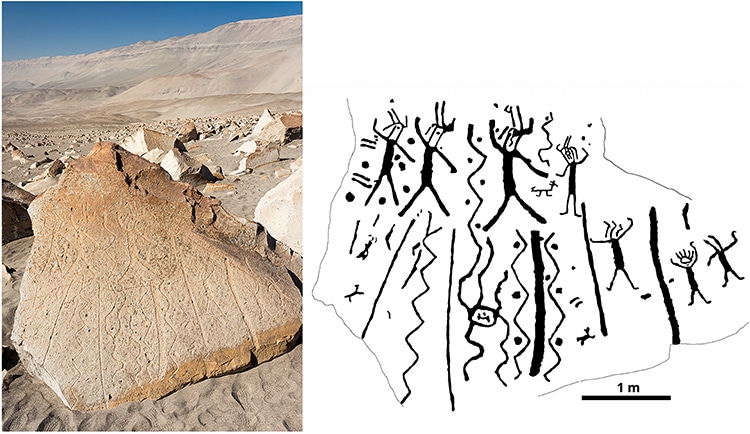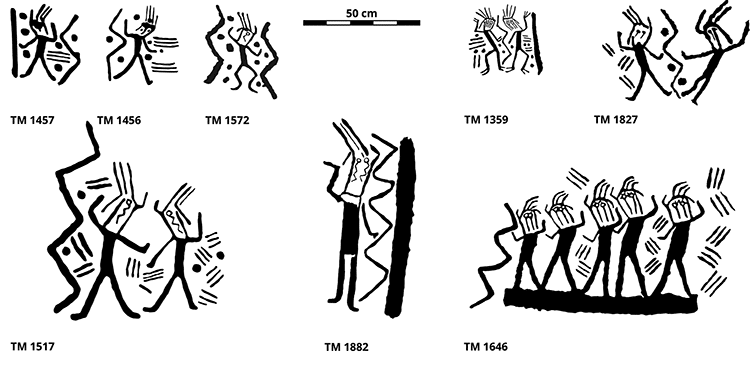Rock art always presents fascinating—sometimes mysterious—insight into the lives of ancient humans. What did they value enough to carve into stone? What do the patterns and designs mean? Some things, such as paintings or etchings of game and hunters, tell a clearer story. Others may raise questions with more ephemeral implications. Feelings, magic, and music might all lurk behind the engravings of prehistoric hands. In the Peruvian desert, a large collection of pre-Columbian rock art engravings at Toro Muerto depicts repetitive, dancing human figures. Surrounding them are countless zig-zags and squiggles. A new paper suggests these are petroglyphic representations of music played at psychedelic religious ceremonies.
The desert region of Toro Muerto contains thousands of petroglyphs carved into the rock by ancient artists. Dancers, danzantes, appear often. Surrounding them are lightning-like lines as well as dots and hash marks. Researchers have long wondered what these might be: lightning, water, or something else. The new paper suggests that the lines might, in fact, represent music and sound pulsing through the air. The researchers compared this to the art of the Tukano culture in the Colombian rainforest. In that culture’s artwork, geometric designs are thought to represent the psychedelic state felt during the sacred use of ayahuasca.
Songs in this culture were a way to transport oneself to the beginning of time. Geometric patterns were a way of visually conveying spiritual energy. “Bearing in mind the universality of this motif in the iconography of pre-Columbian America,” the authors write, “we cannot exclude the fact that in this case, too, the construction of this motif may have been a matter of convention, and the representation of an idea known more broadly and earlier.”
In short, the zig-zags of the Peruvian rocks may be music used in religious psychedelic ceremonies. While there is no way to know for sure, this postulation offers an intriguing window into the religious and artistic culture of ancient South America.
The desert region of Toro Muerto in Peru contains thousands of petroglyphs carved into the rock by ancient artists.
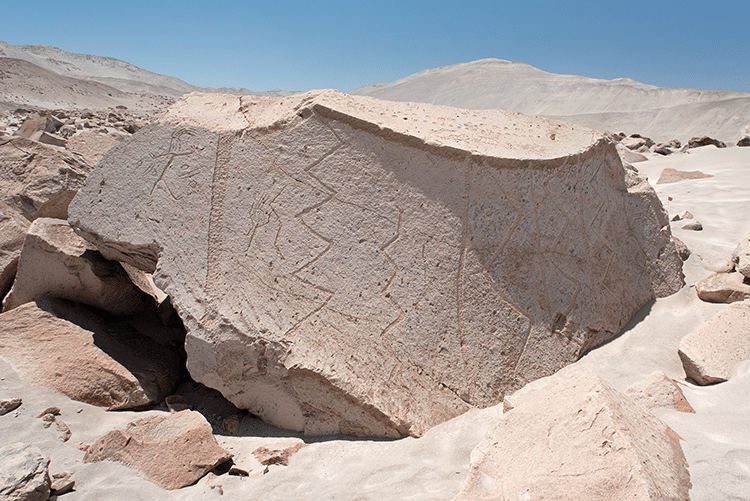
Photo: A. Rozwadowski (CC BY 4.0 DEED)
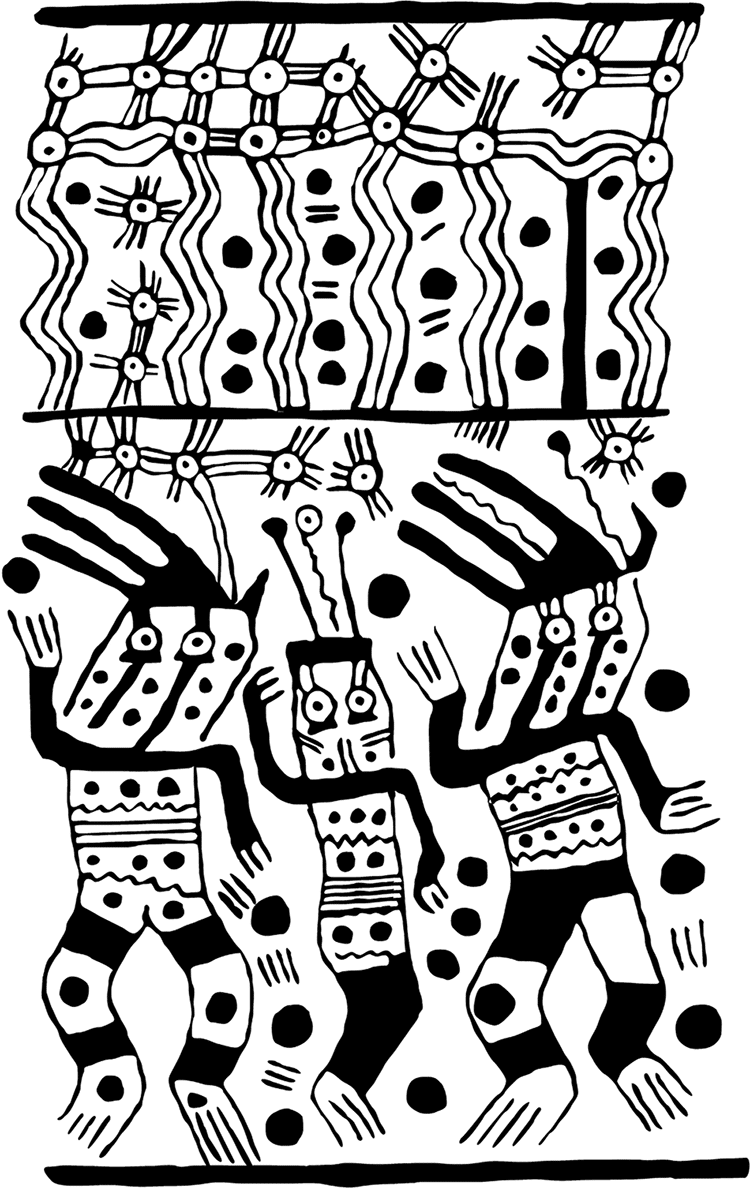
Photo: J.Z. Wołoszyn (CC BY 4.0 DEED)
These pre-Columbian rock art drawings depict what is thought to be music and dancing at psychedelic religious ceremonies.
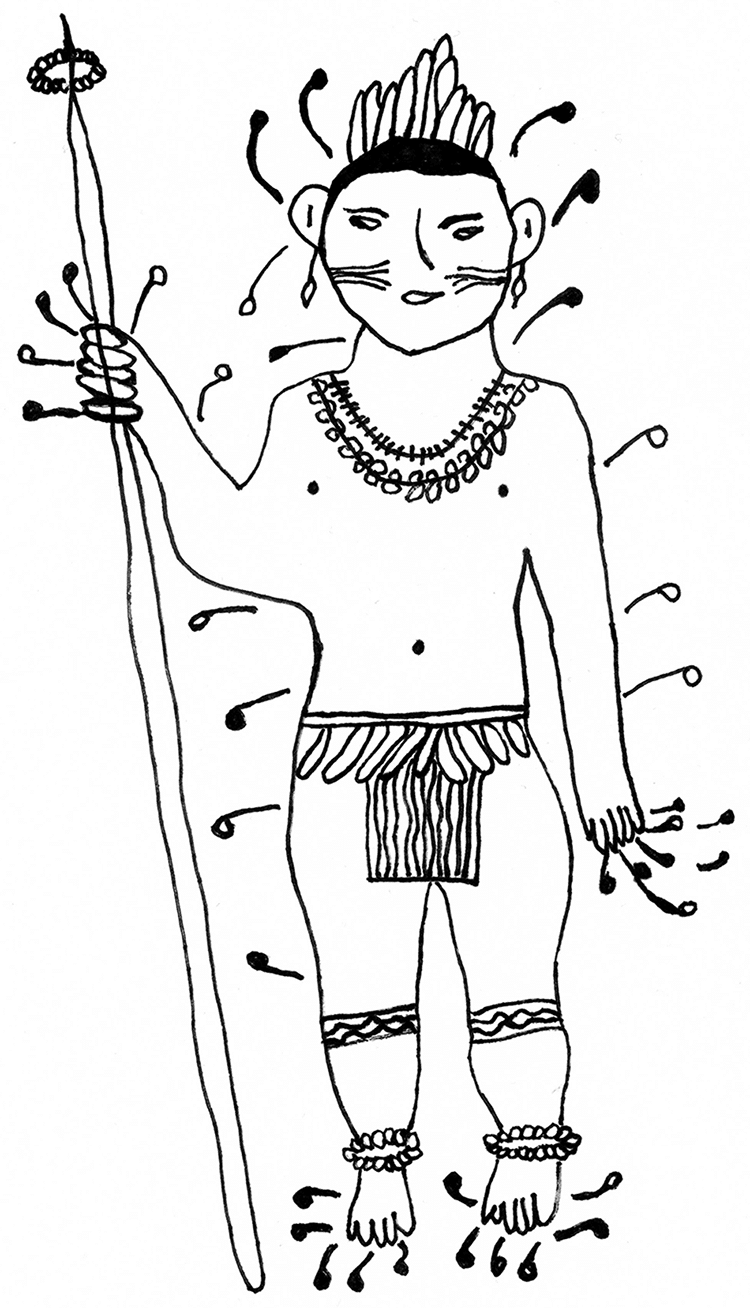
Photo: Desana artist Luiz Lana. Redrawn by A. Rozwadowski after Umusĩ Pãrõkumu & Tõrãmũ Kẽhíri 1995, fig. 33 / A, Rozwadowski et al., CC BY 4.0 DEED
h/t: [IFL Science]
Related Articles:
2,700-Year-Old Petroglyphs Are Discovered Under Moss in Sweden
3D Technology Reveals North America’s Largest Repository of Ancient Cave Art
Ancestral Pueblo Carvings Discovered in the Southwest May Have Been a Calendar
Ancient Life-Size Carvings of Wild Camels Are Discovered in the Deserts of Saudi Arabia

